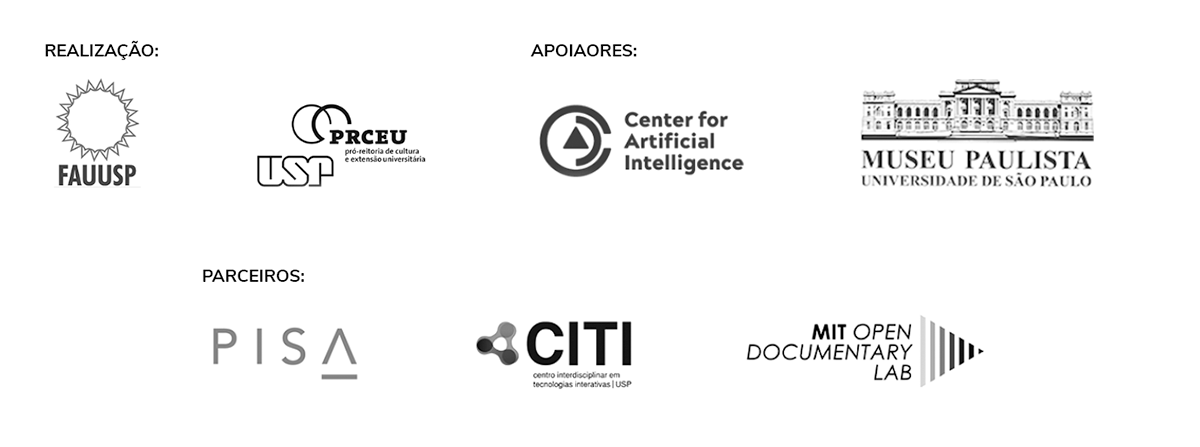Glory to which founders, after all?
Texto: Bruna Bacetti Sousa. Modelagem 3D: Beatriz Barbosa de Lima, David Atalla Aly, João Generoso Gonzales, Laura Sayuri de Haro, Nathan Lavansdoski Menegon. Pós-Produção: Luís Felipe Abbud, João Generoso Gonzales.
Glória Imortal aos Fundadores de São Paulo was the first great monument of the Republic in São Paulo, the object of a contest held in 1909. The monument was conceived as an urban landmark, establishing a narrative about the settlement of the city and paying tribute to the founding Jesuits. The Commission responsible for the competition, formed by important political figures of the time, included in the application guidelines the version of the historical facts that should be portrayed in the work, reproducing an authorized narrative about the period and promoting its general adherence and acceptance as an official and absolute truth. The representations of Father José de Anchieta and other religious figures considered central to the consolidation of the settlement were classified as essential and indispensable to the monument, reinforcing the religious bias that was to be conveyed and popularized among all. The winning proposal was that of the Italian sculptor Amedeo Zani, chosen for combining formal representation and monumental aesthetics, evoking important historical episodes and highlighting its protagonists.
Zani’s work stands 25 meters high and is divided into three parts. 1) A gray granite base that, according to the sculptor, should configure ‘a large terrace which, contrary to the inveterate habit of blocking the monument from the public by means of railings, will be accessible…’, with its four sides ornamented in bronze bas-reliefs at a height convenient for viewing. The representation includes: the first mass in the village celebrated by Father Manoel de Paiva, on January 25, 1554 (date celebrated as the day of the conversion of São Paulo); the catechesis of the indigenous people by Father Anchieta; the defense of the settlement by Chief Tibiriçá; and the peace negotiation signed between Anchieta and Nóbrega and the Tamoios people. 2) A column in polished pink granite with bronze reliefs representing the physical labor in the construction of the city, carried out by the indigenous people and controlled/supervised by the Jesuits; and medallions with bronze profiles of authorities such as: Martim Afonso de Souza, Mem de Sá, Dom João III and Pope Julius III. 3) At the very top, there is a female figure in bronze, an allegory of the city of São Paulo crowning its ‘founders.’
The work exalts the missionary work of the Jesuits, considered responsible for the conversion of indigenous people into ‘good savages’ through catechesis and, for this reason, seen as fundamental agents in the process of founding and consolidating the city based on Catholicism. The figures of Anchieta, a white European colonizer, and Tibiriçá, an indigenous man converted to Catholicism, reflect the ideology of civilization versus barbarism. It contrasts with another narrative much explored in the city’s monuments, especially from the 1930s onwards, which presupposes the mixing of races and the heroic representation of the bandeirante as a pioneer of the territory.
Designed to integrate the remodeling of the old Largo do Collegio – the original landmark of the foundation of the city where the first Jesuit building was built in 1554 – the monument took two decades to be inaugurated due to the need to demolish the Palácio do Governo building installed there since the 19th century. The complete reconstruction of the public site in the molds of how it was when the city was founded, four centuries earlier, led to several controversies and conflicts of interest that influenced the delay in installing the monument, which only took place in 1925. It is important to highlight that the new building, a replica of the original made of rammed earth, and therefore a ‘historical falsehood,’ would only begin its construction in 1953, as part of the preparations for the celebrations of the IV Centenary of the City, in 1954.
Currently, during the first two decades of the 21st century, ‘Glória Imortal’ has been going through an intense process of resignification. In 2002, after 14 years surrounded by fences and isolated from the public – the extreme opposite of what its creator intended – the monument was returned to its intended state. In 2004, the year of the city’s 450th anniversary, a meticulous restoration was carried out which, together with other redevelopment actions in its surroundings, promoted the reintegration of the monument to the city. In 2007, during the cultural event known as Virada Cultural, visual artist Nele Azevedo’s intervention ‘Glória às lutas inglórias’ [Glory to the Inglorious Struggles] was conceived as an anti-monument to the obelisk. Using market crates full of fruit, a drawing of a geometric design of Guarani origin with the same dimensions as Amadeu Zani’s work was built, creating small patios and spaces, proposing to rethink the signs and meanings of that artistic work. The Jornada do Patrimônio – by the Department of Historical Heritage (DPH) – has lent new perspectives to the monument. In 2019, during a photographic expedition through the central region of the city, moments of appropriation in Pateo do Colégio by an indigenous group were captured. In 2020, a Body Paint performance titled ‘Patrimônio Vivo’ [Living Heritage] brought together performers, visual artists and musicians to instigate different ways of understanding and being affected by the work through a new look at heritage.
References
- KUHN, J. C. S.; CYMBALISTA, R. O pátio do colégio em São Paulo entre 1889 a 1972: agentes, tensões e representações. URBANA: Revista Eletrônica do Centro Interdisciplinar de Estudos sobre a Cidade, Campinas, SP, v. 6, n. 1, p. 740–757, 2014. Disponível em: https://periodicos.sbu.unicamp.br/ojs/index.php/urbana/article/view/8635323. Acesso em 04 de ago. de 2021.
- UHLE, A. R. ‘Operários da memória: Artistas Escultores do início do século XX e o concurso do Monumento Glória Imortal Aos Fundadores De São Paulo’. Anais Do Museu Paulista: História E Cultura Material, vol. 23, nº 2, dezembro de 2015, p. 139-63. Disponível em: https://www.scielo.br/j/anaismp/a/xCYHpTqFHVTYqgzx7xjqKdh/abstract/?lang=pt.










